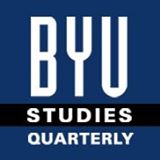BYU Studies

Keywords
Book of Abraham, Moreh, location, setting
Abstract
The second chapter of the Book of Abraham parallels content found in Genesis 12. Both texts narrate the patriarch’s flight into Canaan and provide specific geographic details about the route he and his family took as they fled Haran (Abr. 2:14–18; Gen. 12:4–9). The Book of Abraham describes Abraham as “journey[ing] from Haran by the way of Jershon, to come to the land of Canaan” (Abr. 2:16).1 Thereafter, Abraham and his party “passed from Jershon through the land unto the place of Sechem” (Abr. 2:18).2 This Sechem, the text says, “was situated in the plains of Moreh,” which themselves were located within “the borders of the land of the Canaanites.” Here Abraham “offered sacrifice . . . in the plains of Moreh, and called on the Lord devoutly.” He did this, he says, because he discovered that the land of Canaan was an “idolatrous nation” (Abr. 2:18). As read in both Genesis and the Book of Abraham, it is here that Abraham received a theophany of the Lord with the promise “unto thy seed will I give this land” (Abr. 2:19; compare Gen. 12:7).
Recommended Citation
Smoot, Stephen O.; Gee, John; Muhlestein, Kerry; and Thompson, John S.
(2022)
"The Plains of Moreh,"
BYU Studies: Vol. 61:
Iss.
4, Article 19.
Available at:
https://scholarsarchive.byu.edu/byusq/vol61/iss4/19
